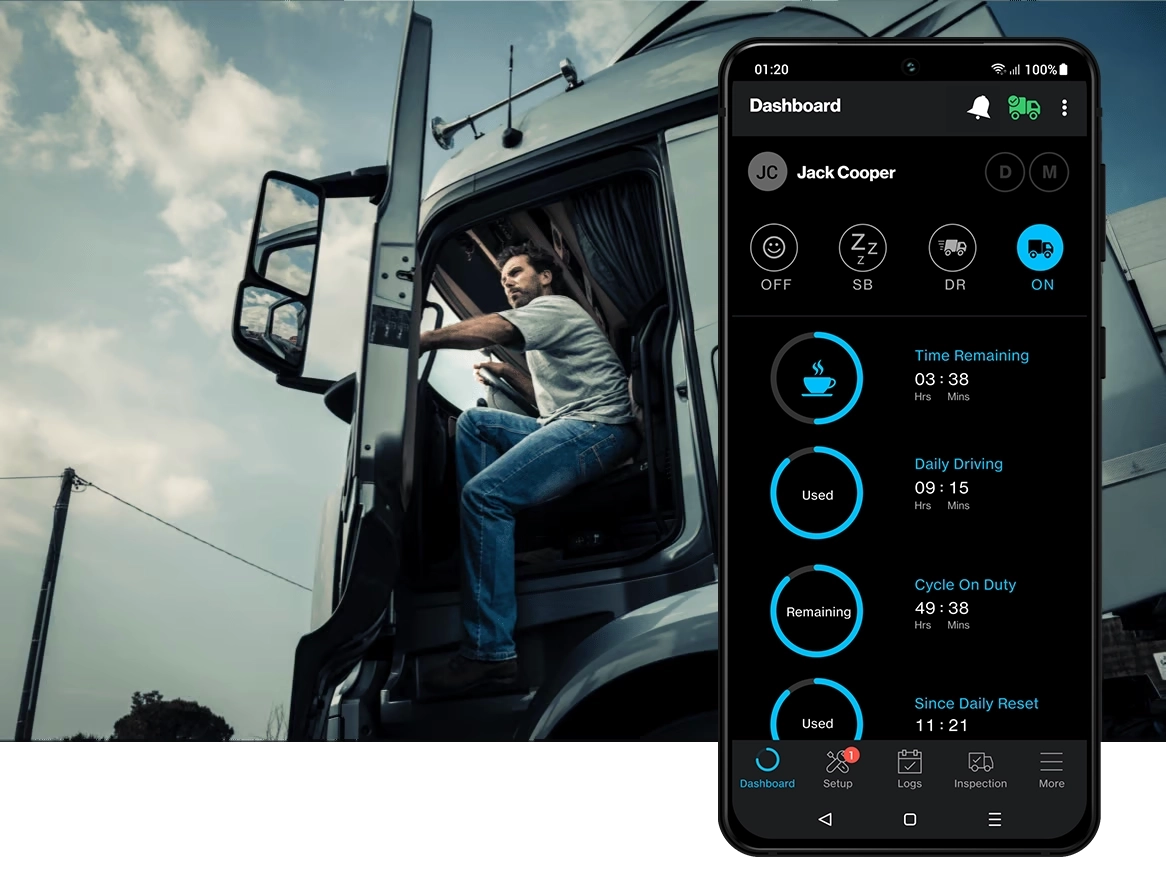What is Hours of Service (HOS)?

What is Hours of Service (HOS)?
HOS stands for Hours of Service. It is the maximum allowable working hours for commercial motor vehicle drivers in a given period. It also defines how much rest a truck driver should have between shifts, with the goal of helping drivers stay awake and alert, making the roadways safer for all.
These regulations are set by the Federal Motor Carrier Safety Administration (FMCSA), a division of the U.S. Department of Transportation (DOT) that oversees the trucking industry in the United States. HOS rules aim to reduce accidents caused by drowsy or overworked truck drivers. These rules date back to the 1930s, and over the years they have been refined with the evolving U.S. trucking industry.
Why are HOS regulations necessary?
HOS are an important component of safety standards on the road. DOT compliance is not just a bureaucratic hoop to jump through, the standards are crucial for protecting drivers and looking out for the safety of all other road users. Fleet owners can implement various safety improvements such as fleet dash cams, GPS tracking and preventative vehicle maintenance, but the fact remains that fatigued drivers are always at greater risk of accidents and injuries.
According to the National Safety Council, drowsy drivers caused nearly 100,000 vehicle accidents per year and an estimated 800 deaths in 2017. Most of these crashes did not involve commercial drivers, but the figures underscore the extreme danger of fatigued driving, especially for drivers of heavy-duty vehicles. Without HOS rules, those unsettling numbers might be even higher. The regulations help to reduce accidents, save lives and promote safer roads for everyone by assuring that professional drivers get adequate rest.
Examples of HOS rules
HOS rules are not one-size-fits-all. They differ based on whether a vehicle is carrying people or property, and they can also vary based on the driver’s work schedule. Here is a closer look at how the regulations work.
Vehicles carrying property
Property-carrying vehicles are commercial trucks that transport any type of goods. The following hours-of-service regulations stipulate maximum drive time, minimum rest time, and frequency of breaks while on the road.
- 11-hour driving limit: Cannot drive for longer than 11 hours*
- 14-hour duty limit: Cannot be on duty for more than 14 hours*
- 30-minute rest breaks: Must be taken every eight hours
- 60-hour limit: Cannot drive more than 60 hours in any seven-day period**
- 70-hour limit: Cannot drive more than 70 hours in any eight-day period**
- Sleeper berth provision: Drivers may split their required off-duty time as long as at least seven continuous hours are spent in the sleeper berth, and the other rest period is at least two hours long
These HOS summaries and those below for passenger-carrying vehicles come directly from the FMCSA hours-of-service regulations table, and that page should serve as a reference for the most up-to-date rules.
Vehicles carrying people
For vehicles like buses that carry passengers, drivers have slightly stricter guidelines. These limits emphasize the safety of multiple individuals traveling in a single vehicle.
- 10-hour driving limit: Cannot drive for longer than 10 hours***
- 15-hour duty limit: Cannot be on duty for more than 15 hours***
- 60-hour limit: Cannot drive more than 60 hours in any seven-day period
- 70-hour limit: Cannot drive more than 70 hours in any eight-day period
- Sleeper berth provision: Drivers using a sleeper berth can split their required off-duty time between two periods in the sleeper berth, provided neither period is less than two hours long, and pairings must add up to at least eight hours
Must be followed by at least 10 hours off-duty. **Requires 34 hours off duty to reset this period (the 34-hour restart). **Must be followed by at least eight hours off-duty.
Who must adhere to HOS rules?
HOS rules don’t just apply to long-haul truckers, but to any drivers of commercial vehicles that operate between states. According to FMCSA, the definition of commercial motor vehicle (CMV) is one over 10,000 pounds that’s used for business, or any vehicle used to transport hazardous materials. In addition, passenger vehicles designed to carry more than eight people (including the driver) for compensation, or more than 15 passengers without compensation, are also considered CMVs.
HOS exceptions and exemptions explained
There are important exceptions to the hours-of-service regulations as stipulated by FMCSA. These are reasons why a driver may go over the maximum driving limit due to special circumstances.
- Adverse driving conditions: Drivers can extend their maximum driving time and on-duty limits by up to two hours when bad weather or other adverse driving conditions are at play.
- Short-haul exception: If a driver only operates within a 150 air-mile radius of a central location, he or she is exempt from maximum drive time and minimum rest time rules, provided a maximum duty period of 14 hours is not exceeded.
These exemptions are in place to allow flexibility for drivers and fleet managers to prioritize efficiency without compromising safety in certain delivery situations.
How are HOS recorded?
Recording hours-of-service is no longer as basic as jotting down drive times in a logbook. The industry now mandates electronic logging devices (ELDs) for most types of drivers. ELDs are mobile systems that integrate with the vehicle’s engine to automatically record driving time for accurate HOS tracking. They also transmit data over a cellular network to connect with fleet management software in near real-time.
Modern GPS fleet tracking software can complement ELDs by assisting in gathering geographic data and optimizing driving routes for both efficiency and safety. This kind of integrated telematics system offers complete visibility into fleet operations with a minimal amount of manual recording. This leads to easier compliance with HOS regulations, improved business performance, and ideally a safer environment for everyone on America’s roads.
Our solutions

HOS













